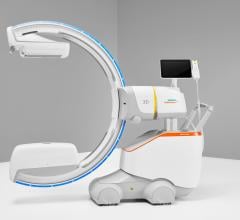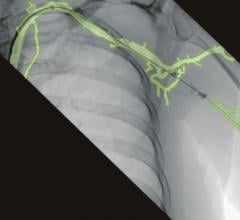The phrase “doing more with less” is becoming more prevalent in tightening economic environments, and the operating room (OR) is one example of where hospitals are looking to maximize savings. Mobile C-arm units are important for maximizing space in the OR and can provide the image quality needed to visualize anatomy and devices during complex surgical procedures. The latest advances in mobile C-arms aim to provide users with the flexibility and ergonomics that can support accomplishing more in the OR with less.
Mobile surgical units have become more attractive to certain healthcare segments, including cardiology and orthopedics, that are looking to perform more minimally invasive procedures outside the OR setting, according to Eric Hudson, senior field marketing manager of mobile surgery at Philips Healthcare. With more such procedures in demand, facilities want to accommodate as many cases as possible in one physical setting. The latest market trends show vendors are focusing on “creating a C-arm with the geometry that can be used in the most number of patient cases, while at the same time minimizing the space it actually takes up in the OR,” Hudson says.
Increasing Integration and Connectivity
One possible growing trend is the ability of mobile C-arms to easily integrate with other systems in the clinical setting, such as information systems or other imaging systems. “I think one of the exciting changes that we see from a technology viewpoint is integration,” says Jon Snyder, chief technology officer for GE Healthcare’s surgery business. “The idea is that integration is saving a couple of things. It’s saving space in the OR, where you can integrate two machines and save floor space. And you can improve productivity because you might not have to go out of the OR to gather another machine.”
At the 2012 meeting of the Radiological Society of North America (RSNA), GE Healthcare showcased a new “mobile hybrid OR” solution that featured the Venue 40 tablet ultrasound system mounted within the workstation of the OEC 9900 Elite mobile C-arm, a solution that combines fluoroscopy and ultrasound for the OR. This type of integration can be useful for reducing dose, Snyder says, as users can quickly turn to ultrasound for imaging during parts of a procedure where fluoroscopy might not be needed.
Designed for the OEC 9900 Elite, GE Healthcare also offers a Wireless Service Platform (WSP) feature, which allows clinicians to wirelessly transmit the mobile C-arm’s information directly to the healthcare provider’s picture archiving and communications system (PACS). This can greatly reduce the time needed to move X-ray images taken with a mobile C-arm through the hospital network, as the images can be sent almost immediately rather than having to wait to transport the C-arm to a wired connection.
Another new wireless feature of GE’s OEC systems is the use of blue-tooth enabled foot switch.
Dose Management and Image Quality
Philips Healthcare’s Veradius Neo, which was introduced with a flat panel detector during the 2011 RSNA meeting, offers several benefits for clinicians looking to more efficiently manage or reduce radiation dose to patients. The system uses a rotating anode in combination with constant beam filtration in its X-ray generator, allowing a higher level of penetration into the patient without leaving behind soft radiation ramps and trails. “One of the ways we actively manage dose is to minimize or eliminate the amount of soft radiation that essentially penetrates the patient but never hits the detector,” Hudson says. The use of a rotating anode also reduces motion blur, delivering sharp and crisp X-ray images for even fast-moving anatomy that may normally be difficult to image.
What to Watch for in the Future
Ergonomics is another factor to consider when thinking about mobile C-arms in the OR. The Veradius Neo provides about five degrees of extra angulation without consuming more space, says Hudson. And patient tables should be designed for X-ray imaging, allowing more movement and positioning of the C-arm around the patient. In the fall of 2012, Ziehm Imaging announced a distribution agreement with Stille to offer OR tables from the Swedish manufacturer along with the Ziehm Vision RFD mobile C-arm. The combination of the Ziehm Vision RFD and the Stille imagiQ2 OR table for vascular surgery, for instance, offers a hybrid OR solution for those in interventional surgery, among other channels.
At RSNA 2012, Siemens previewed a new mobile C-arm system under development. The Cios Alpha is designed with full view flat detector technology intended to provide higher image quality as well as a greater field-of-view than conventional systems, even during image rotation. The system will be water-cooled, so it can be used during longer or more complex procedures. It will also utilize a touchscreen interface that can be mounted on the patient table. The system is currently under development and is not for sale.


 June 20, 2024
June 20, 2024 







